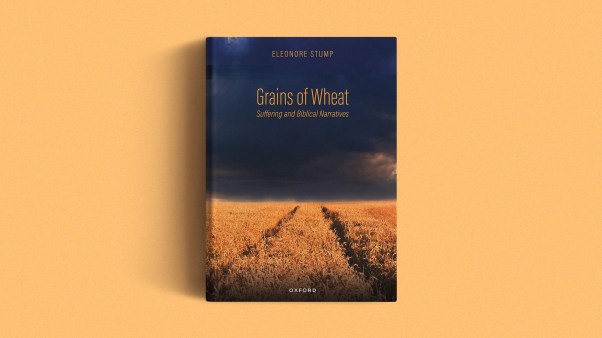Gwen Shamblin, founder of the popular Weigh Down diet, has already been compared to early church figures—the desert monks—because her ideas link physical hunger and spiritual hunger. Now she can be compared to another early church figure, Arius, because her Christology is getting her in trouble.
Shamblin, for those of you who haven’t been following the coverage at www.ChristianityToday.com, writes in her doctrinal statement, “I believe that Jesus and God are two separate beings.” She also objects to the term “trinity”: “Our feeling is that the word ‘trinity’ implies equality in leadership, or shared Lordship. … We feel that we grieve Jesus when we do not watch our words and their meaning—especially a word not found in either the Old or New Testament, writings that span centuries of God’s inspired word.” (Of course, “Bible” and “evangelism” aren’t in the Scriptures, either, but that’s another argument.)
Arius (ca. 250-ca. 336) disagreed with a different term, “homoousios,” which is a Greek word meaning “of the same substance”—as in, Jesus is “of the same substance” as the Father. Arius preferred “homoiousios,” “of similar substance” (making the proverbial one iota of difference). In song, he put it this way: “Yet the Son’s substance is / Removed from the substance of the Father: / The Son is not equal to the Father, / Nor does he share the same substance.”
At the 325 Council of Nicea, Arius’s logic—if there’s one God, but Jesus and God are separate beings, then Jesus must not be God—crashed into Athanasius’s ideas of the Incarnation. Athanasius (ca. 296- 373) shuddered to think that Jesus might not have been fully God, because to him that meant humanity was not really saved. As Athanasius wrote in his treatise De Incarnatione, “We ourselves were the motive of His incarnation; it was for our salvation that He loved man to the point of being born and of appearing in a human body.” Athanasius’s view won out, and the Nicene Creed describes Jesus as “Light of Light, very God of very God, begotten, not made, being of one substance with the Father.”
But Shamblin’s problem with traditional trinitarian doctrine is less related to salvation than to subordination. The doctrine relates to her diet, she writes, because “if you do not understand that God is the clear authority and that Jesus was under God’s authority, then you will not have a clear picture of what it means to be Christ like. Jesus suffered, obeyed, submitted, denied his will, and made it his food to do the will of the Father.”
Subordination was a also big question at the Council of Nicea. Arians believed that as Jesus was subordinate to God, so the church (the kingdom of the Son) should be subordinate to the empire (seen at the time as the kingdom of the Father). The emperor could even be considered the bishop of the bishops. This view of church-state relations continued to have some influence in the Eastern Christian empire, based in Constantinople, even after the eighth century, when Arianism largely faded from the European scene.
Christians in the orthodox camp (not Eastern Orthodox, because we’re talking about the fourth century) thoroughly disagreed. They believed that as Jesus was equal to the Father but operated differently, so the church and the empire were equal but operated in somewhat separate spheres—the closest thing to a “separation of church and state” idea in early church history. In practice, the bishops would defer to the emperor on worldly concerns like taxation and administration, but the emperor needed to recognize the bishops’ authority in spiritual matters. The most famous example of the latter is Bishop Ambrose’s refusal to let Emperor Theodosius I take Communion until he repented of a massacre he had ordered at Thessalonica in 390.
So what would a homoousios-based diet look like? I have no idea. I also don’t know how much Arian-style doctrine Shamblin would accept, because all I have to go on is the statement at her Web site. But I bet they don’t recite the Nicene Creed at her new Remnant Fellowship church.
For more information on Arianism and other early church doctrinal debates, see J.N.D. Kelly’s classic Early Christian Doctrines, Mark Noll’s Turning Points (which I highly recommend), and Christian History issue 51: Heresy in the Early Church.
An article and several links related to Shamblin and the Weigh Down program can be found at www.ChristianityToday.com/ct/2000/137/53.0.html.
Elesha can be reached at cheditor@ChristianityToday.com.
Past issues prior to issue 51 are not available online. Click here for information on ordering past issues.
Copyright © 2000 by the author or Christianity Today/Christian History magazine.Click here for reprint information on Christian History.








